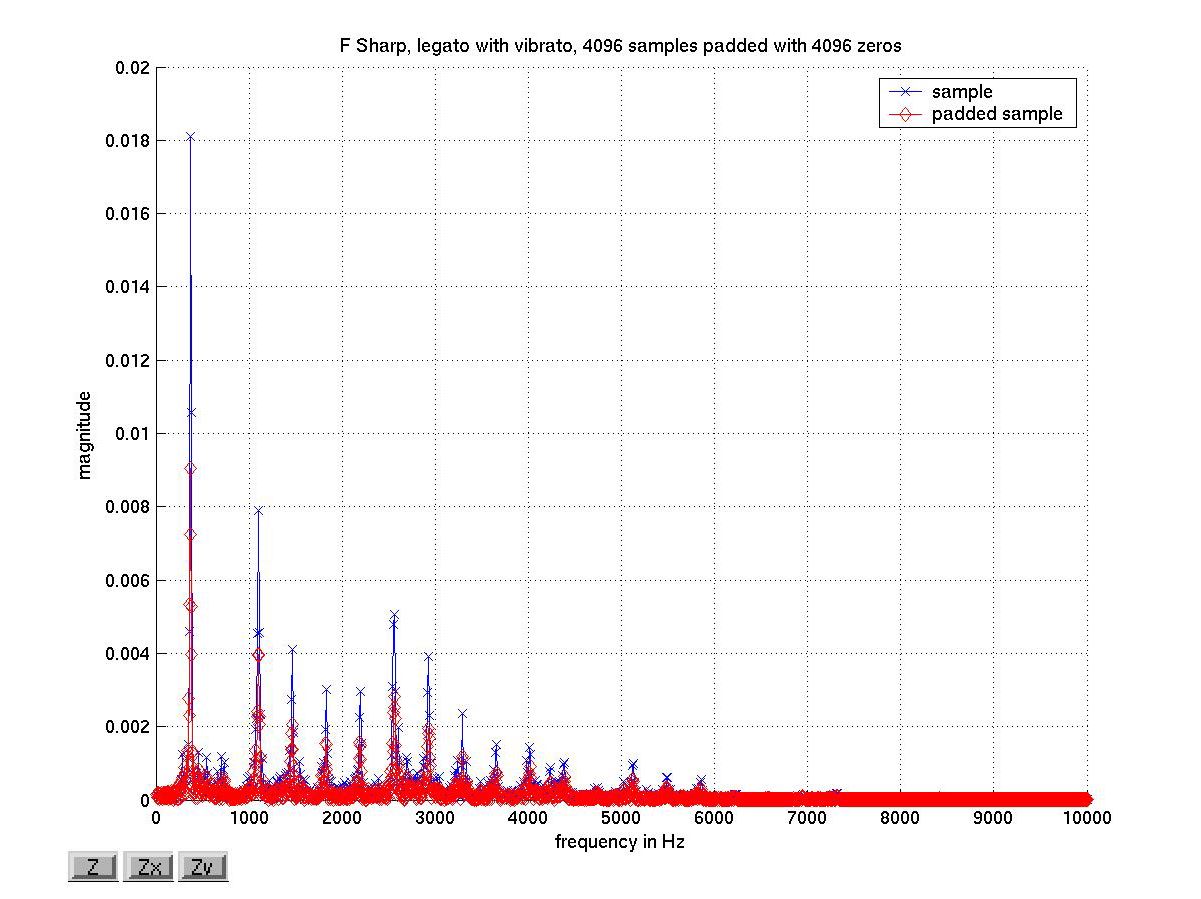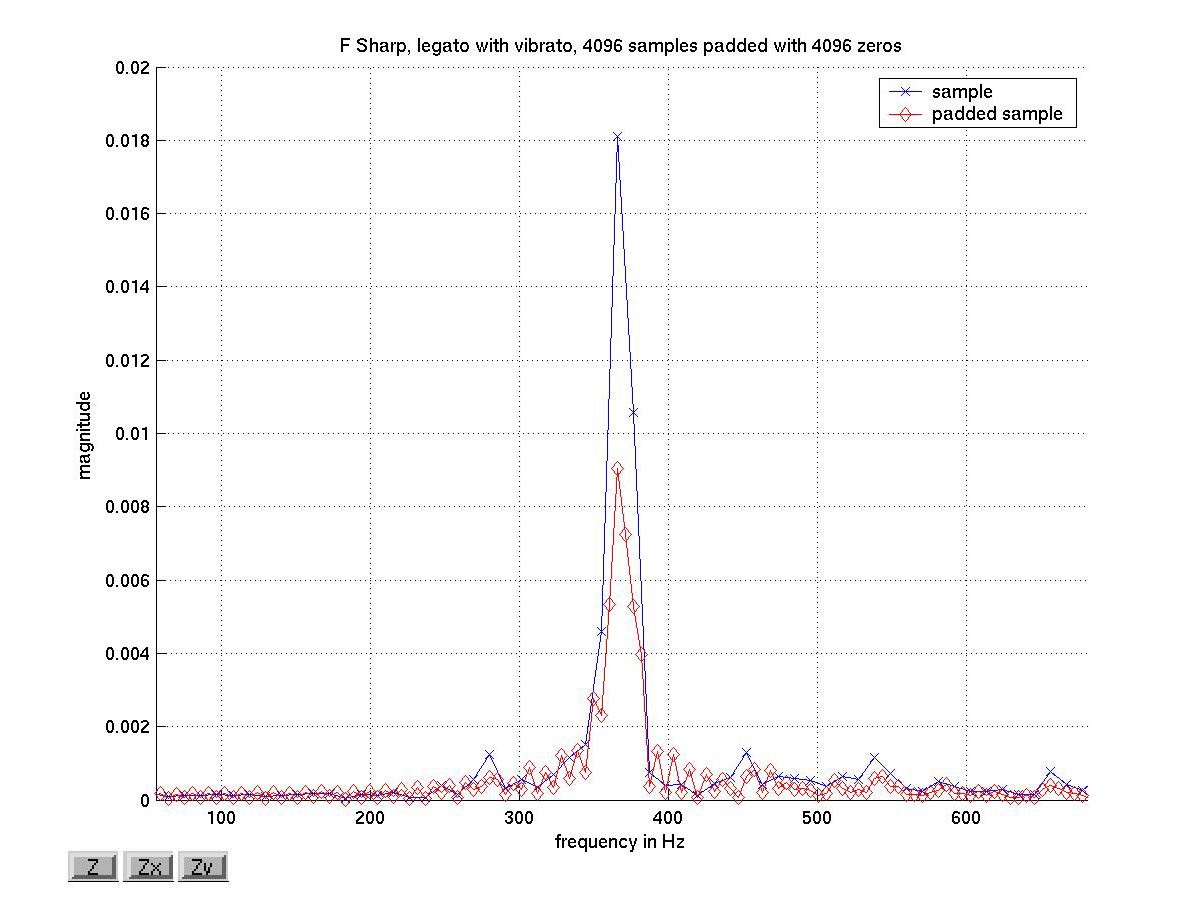
The FFT assumes that the signal it operates on is periodic. We can add length to the signal by adding a bunch of zeros on the end. This may seem like cheating, but in reality it's simply treating the signal as if the short burst is followed by silence, and that whole thing (burst and silence) is repeated on to infinity. Adding zeros to the end effectively allows us to increase the frequency resolution arbitrarily. However, we must make sure that we are still getting a reasonable approximation of the actual note.
Below is an FFT of the F Sharp played legato with vibrato from the first page. The blue line shows the FFT with n=4096. The red line shows the FFT of those 4096 samples with an additional 4096 zeros added on to the end.

The overall shape looks about the same in both cases. To get a better idea of what adding the zeros did, lets zoom in on the first peak.
 Zooming in shows that the red line does indeed have twice as many points
as the blue line. However, the width of the peak is approximately the
same in both cases. For us, this means that padding our samples with
zeros is not going to yield more useful information than simply performing
the FFT on the unpadded signal.
Zooming in shows that the red line does indeed have twice as many points
as the blue line. However, the width of the peak is approximately the
same in both cases. For us, this means that padding our samples with
zeros is not going to yield more useful information than simply performing
the FFT on the unpadded signal.